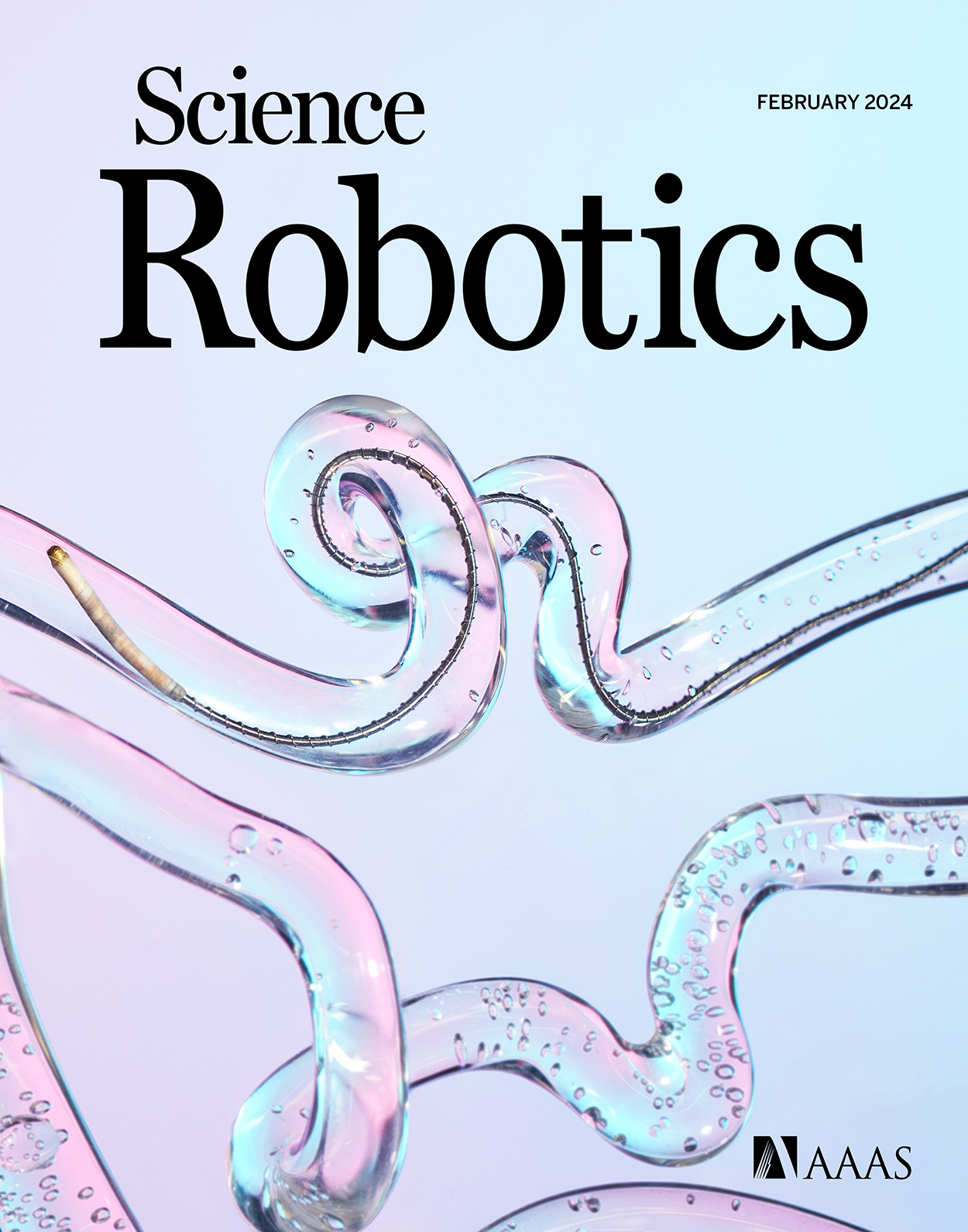Dexterous helical magnetic robot for improved endovascular access

Abstract
Treating vascular diseases in the brain requires access to the affected region inside the body. This is usually accomplished through a minimally invasive technique that involves the use of long, thin devices, such as wires and tubes, that are manually maneuvered by a clinician within the bloodstream. By pushing, pulling, and twisting, these devices are navigated through the tortuous pathways of the blood vessels. The outcome of the procedure heavily relies on the clinician’s skill and the device’s ability to navigate to the affected target region in the bloodstream, which is often inhibited by tortuous blood vessels. Sharp turns require high flexibility, but this flexibility inhibits translation of proximal insertion to distal tip advancement. We present a highly dexterous, magnetically steered continuum robot that overcomes pushability limitations through rotation. A helical protrusion on the device’s surface engages with the vessel wall and translates rotation to forward motion at every point of contact. An articulating magnetic tip allows for active steerability, enabling navigation from the aortic arch to millimeter-sized arteries of the brain. The effectiveness of the magnetic continuum robot has been demonstrated through successful navigation in models of the human vasculature and in blood vessels of a live pig.